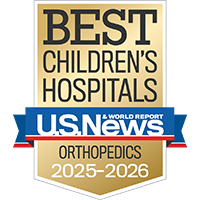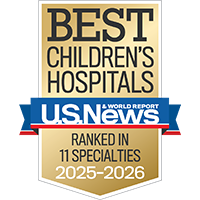Fibular hemimelia

What is fibular hemimelia?
Fibular hemimelia is a rare condition in which someone is missing part or all of the fibula, the smaller of the lower leg's two bones. It's a congenital condition, meaning people are born with it. Another name for it is postaxial hypoplasia.Most children with fibular hemimelia have it in only one leg, though some have it in both. The affected leg is shorter than the other, what doctors call a leg length discrepancy, and the difference may be mild or obvious. There are often other abnormalities in the leg, ankle or foot.
Causes of fibular hemimelia
Fibular hemimelia is thought to occur early in a pregnancy, when the precursor to the lower limb (the leg bud) develops abnormally. We don't know why this happens. Although genes may play a role, it's not something the child inherits from their parents, so having one child with the condition doesn't increase the chances that your future children will be affected.Symptoms of fibular hemimelia
If your child is born with fibular hemimelia, you may notice several physical signs, such as:
- One leg that's shorter than the other
- Abnormalities of the ankle and foot
- Knock knee on the affected side
- Missing toes
A doctor may detect less obvious signs when examining your child, such as:
- A shallow hip joint
- Weak or missing knee ligaments
As the child grows, the limb difference can make standing and walking difficult.
Diagnosis of fibular hemimelia
Fibular hemimelia may be detected before birth during a routine prenatal ultrasound. Otherwise, a pediatrician may notice the signs when examining your child. The doctor will order imaging tests – X-rays and possibly an MRI or CT scan – to gather more information. Because the missing or partial fibula is often accompanied by other abnormalities, the entire leg should be evaluated.Treatment of fibular hemimelia
Because fibular hemimelia varies widely in severity and associated abnormalities, a team that's experienced in limb differences should tailor your child's treatment plan to their needs. The care team may include a pediatric orthopedic surgeon, other types of pediatric specialists, physical therapists, and experts in orthotics and prosthetics.
Children with a mild discrepancy in leg length and stable joints may need simple treatments only. Orthotics, such as shoe lifts (inserts to even out the leg lengths), may be enough. Kids with more severe cases may need surgery to balance out the legs (either slowing the growth of the long leg at the appropriate time or making the short leg longer) or in severe cases, an amputation reconstruction, and fitting with a prosthesis (artificial body part).
Surgery for fibular hemimelia
Surgical options for fibular hemimelia include:
- Guided growth surgery (epiphysiodesis). This procedure halts the longer leg's growth to allow the shorter leg to catch up, helping to equalize their lengths over time as the child develops. This approach is used for children with small differences in leg length and is done before they have finished growing. The specifics of this procedure, including at what age the child should have it done and which bone(s) should be operated on, should be discussed with the treating surgeon
- Limb lengthening. Limb lengthening treatment starts with surgery to cut the bone of the shorter leg and attaching a device, either on the inside of the bone or outside the leg, which is then used to stimulate the bone to grow longer over several months. The same methods are used whether part or all of the fibula is missing. Children with large differences in their leg lengths may need a few rounds of this treatment, spaced over a few years to even out their legs.
- Additional procedures. Some children need surgeries to correct other issues in the foot, ankle, knee or hip.
- Amputation and prosthesis. In severe cases that can't be treated with limb equalization surgery, the doctor may recommend amputating part of the foot or leg so that the child can resume activities with the use of a customized prosthesis. With modern artificial limbs, children can learn to walk, run and play like other kids. The prosthesis will need regular adjustments or replacements as your child grows.
Where to get care (3)
Awards & recognition
-

One of the nation's best for orthopedics
-

Ranked among the nation's best in 11 specialties











































